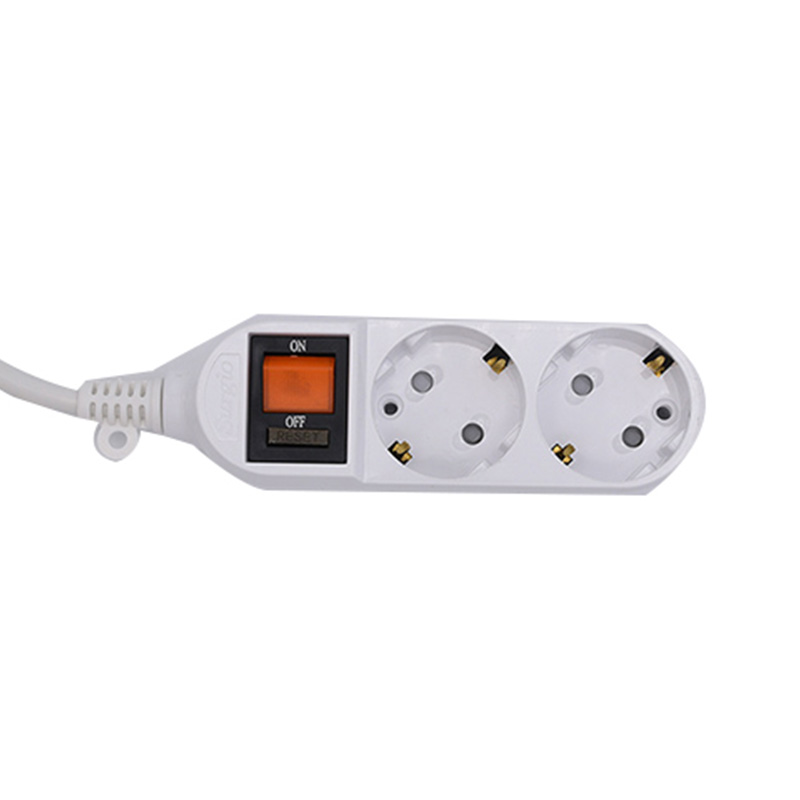Submit feedback
What role does the independent switch design of POWER STRIP play in energy efficiency and energy saving?
 2024.10.12
2024.10.12
 Industry News
Industry News
The independent switch design of a power strip plays a crucial role in improving energy efficiency and promoting energy savings by allowing users to control the power supply to individual outlets. This feature offers a practical solution for reducing electricity consumption by targeting specific devices that do not need to be constantly powered. Here are the main ways the independent switch design contributes to energy efficiency:
One of the primary benefits of the independent switch is its ability to cut off power to devices that are not in use. Many electronic devices, such as televisions, chargers, computers, and kitchen appliances, continue to consume energy even when they are turned off. This phenomenon, known as phantom load or standby power, can account for a significant portion of household or office energy usage. Independent switches allow users to physically disconnect the power supply to each device by simply toggling the switch off, effectively eliminating standby power consumption.
By using the independent switches to power down devices that would otherwise continue drawing energy in standby mode, energy consumption can be reduced by up to 5-10%, depending on the number of connected devices.
With an independent switch design, each outlet on the power strip can be controlled separately, allowing users to power only the devices that are needed at a specific time. This prevents the unnecessary powering of devices that are not in use. For example, in a home office or entertainment system setup, users may only need to turn on a computer or television, while keeping peripheral devices such as printers, speakers, or DVD players turned off.
Independent control over each outlet ensures that only necessary devices receive power, thereby reducing overall energy consumption. This targeted control eliminates waste caused by powering idle devices.
Independent switches make it easy for users to develop energy-saving habits. Instead of unplugging individual devices—a task that can be inconvenient or difficult, especially for hard-to-reach outlets—the independent switches offer a simple and quick way to cut off power. The convenience of these switches encourages users to adopt energy-saving practices more consistently, which can have a cumulative effect over time.
User-friendly design: The ability to quickly turn off individual devices makes it more likely that users will regularly power down unnecessary devices, leading to consistent energy savings. This convenience also promotes energy-conscious behavior among households or office users.
In addition to energy efficiency, independent switches contribute to improved safety and device longevity. By disconnecting the power supply to devices that are not in use, the risk of overheating, electrical surges, or short circuits is reduced. Prolonged connection to power can also shorten the lifespan of certain electronics. By controlling the power with independent switches, the life of devices can be extended, reducing the need for replacements and, indirectly, conserving energy and resources involved in manufacturing and disposal.
Turning off unused devices decreases the risk of fire hazards due to prolonged power exposure, especially for high-wattage devices like space heaters, coffee makers, or electric kettles.

Controlling power flow extends the operating life of connected devices, preventing unnecessary wear and tear.
In settings like offices, workshops, or entertainment rooms where multiple devices are connected simultaneously, independent switches provide an effective means of reducing the electrical load. Instead of powering all devices together, users can distribute energy use more efficiently, powering only the necessary devices while conserving energy for the rest.
In environments with several energy-consuming devices, managing power usage through independent switches prevents overload and reduces the cumulative power consumption.
Some advanced power strips integrate smart energy management systems with independent switches, allowing users to monitor and control power usage remotely through mobile apps or timers. These smart power strips can even be programmed to automatically shut off power to individual outlets when devices are not in use, further enhancing energy savings. This integration of independent switches with smart technology adds a layer of automation to energy management, making it easier for users to save energy without manual intervention.
Independent switches in smart power strips can be controlled remotely, and devices can be scheduled to turn off at specific times or when not in use, optimizing energy consumption.
The independent switch design of a power strip is a simple but effective tool for enhancing energy efficiency and reducing energy waste. By providing users with the ability to control the power supply to each outlet, this feature helps eliminate standby power consumption, target specific energy use, and encourage sustainable habits. It also improves safety and device longevity while offering flexibility for users in both residential and commercial environments. Overall, the independent switch design significantly contributes to energy savings and is an important feature for anyone looking to reduce their energy footprint.
 TOP
TOP
 ENG
ENG
 English
English русский
русский 한국어
한국어 Deutsch
Deutsch









